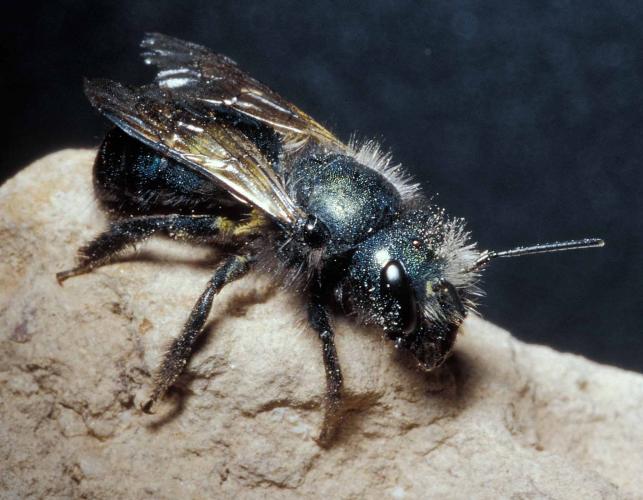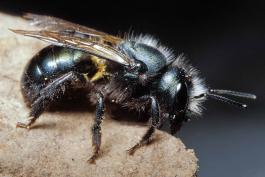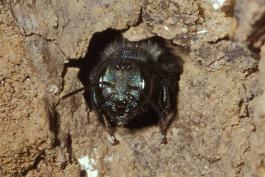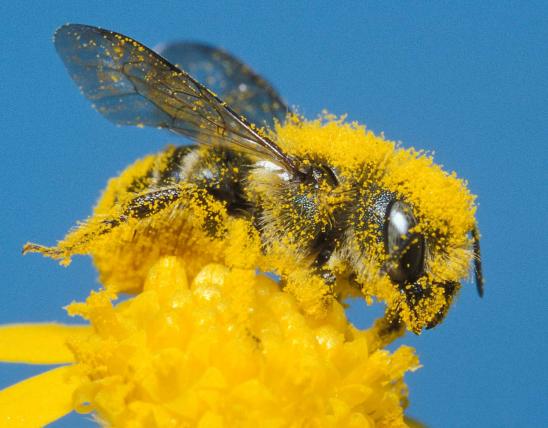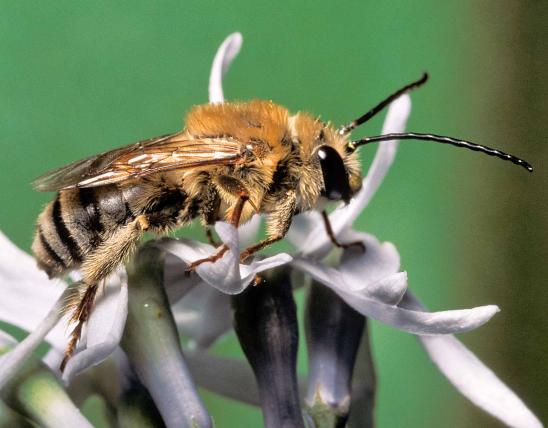
The blue orchard bee is one of our native mason bees, or megachilids. It is an important native pollinator of spring-blooming orchard trees, such as apple, pear, and cherry. The body is black with a bluish or turquoise metallic sheen. Like other members of the megachilid family, females carry pollen on the underside of the abdomen, within a special clump of hairs called a scopa or pollen brush. The megachilid bees are the only group of bees that have a scopa for carrying pollen. When full of pollen, the underside of the abdomen therefore looks yellow or orange. They do not carry pollen in baskets on their legs.
Learn more about orchard bees and other megachilid bees on their group page.
Habitat and Conservation
Food
Status
Life Cycle
There is only one brood a year, with adults flying in springtime. This is a species of solitary bee: females nest individually, not in groups or colonies. Nests are made in existing tunnels in wood or in hollow plant stems or other long, narrow holes. Females collect pollen and roll it into balls. Each ball has an egg laid on it and is in its own chamber of the nest tunnel. Chambers are divided by a mud wall. Each grublike larva eats its pollen ball and goes through a number of molts as it grows. Pupation occurs in late summer. The transformation into adults happens in about a month, but the adults remain in their cocoons, hibernating in place through the winter. Their springtime emergence corresponds with the blooming of the plants they pollinate.
As the mother mason bee creates and provisions her nesting tunnel, the first cells, farthest from the entrance, contain eggs that will become females, and the last cells, closest to the entrance, contain the eggs that will become males. Males, being smaller and maturing faster, will leave the nest tunnel first in the spring, which makes way for the females to exit the tunnel slightly later.
Human Connections
Because of its efficiency and effectiveness as a fruit-tree pollinator, this species is propagated and sold to orchard owners to increase yields of fruit. They are shipped to fruit growers as pupae in late winter, so they can emerge as adults in spring, in time to help with pollination and therefore fruit production.
People who want to encourage the presence of mason and other native bees create nesting blocks for them by drilling holes of specific (or varying) diameters and lengths. You can also buy premade nesting blocks for native bees.
Ecosystem Connections




